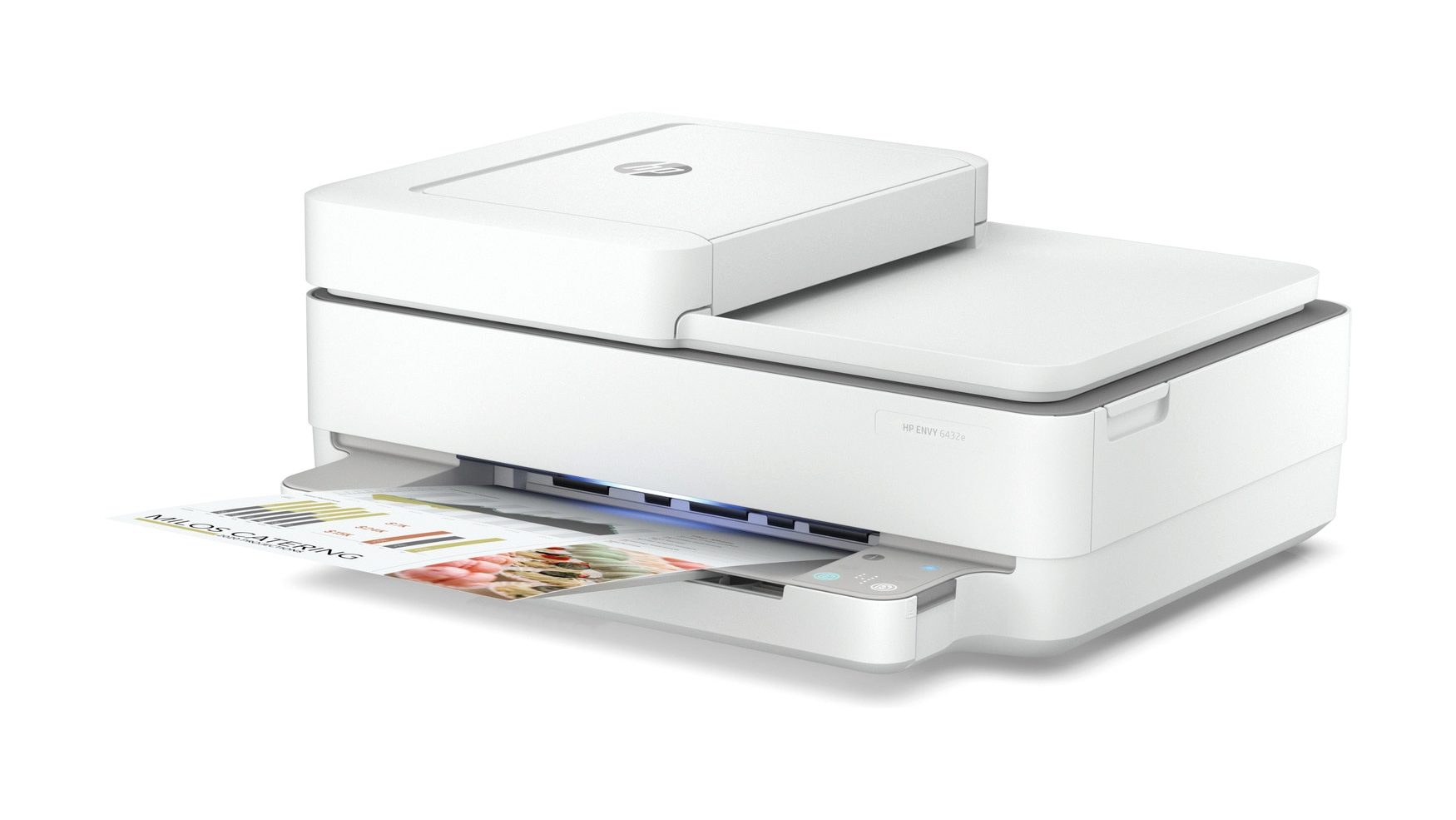HP Envy 6432e review: Beauty that’s only skin-deep
This entry-level inkjet might look great, but it’s expensive, underspecified and tricky to set up

-
+
Attractive design
-
+
9 months free Instant Ink
-
-
Underwhelming speeds
-
-
No display
-
-
Faulty copy functions
-
-
Poor value

At first glance, HP’s Envy 6432e looks promising. While it’s quite ambitiously priced – particularly when you consider that it has no fax modem or display – it looks great, with a sleek, modern design that stands out amongst the usual squat grey boxes that make up most of the printer market.
It’s reminiscent of HP’s Deskjet 4120e, which also impressed us with its construction. Part of the reason for its slick appearance is the lack of any obvious controls; a mix of power, status and copy buttons are all concealed to the right of the paper tray, lighting up only when relevant. It even somehow manages to include a 35-sheet ADF without appearing cluttered or business-like.
At this price we’d usually expect more than this printer’s 120-page black and 75-page colour in-box cartridges, but the Envy 6432e does qualify for nine months’ free Instant Ink – worth up to 6,300 pages if you use the maximum 700 each month.
After this, Instant Ink subscriptions are reasonable with, for example, 300 pages costing £10 per month. Choose to buy your own cartridges, however, and you’ll be paying 7p per black page, and a wince-inducing 21.6p every time you dare dabble in colour. Compare this, for example, to the Canon Pixma TS8350, which manages 6.2p per page for colour prints and 3.4p per page for mono, and with outstanding quality to boot.
The Envy 6432e looks to offset its lack of display with coloured status LEDs that pulse and glow above the paper output tray. But while these might be amusing, we’d rather have a display capable of helping us set up, use and maintain the MFP. While it was easy to join a network, we spent a fruitless hour trying to work out why the copy buttons weren’t illuminated, before concluding that our sample probably had a fault.
We couldn’t complete our copy tests, but this MFP was underwhelming in most other respects. Its 11.1ppm text speed and 2.1ppm colour graphics speed are far slower than we’d expect at this price. Although it offers duplex printing, it delivered ten sides on five pages at only 1.5 images per minute (ipm). Scans were a little more competitive, but the Envy 6432e still needed 22 seconds to capture an A4 page at 300dpi. Generally, both print and scan quality were good, but not as good as the best rivals at this price.
Overall, the Envy 6432e doesn’t do enough to justify its price. While it looks good, it’s underwhelming in most other respects, and its lack of a screen makes it harder to use than many competitors. If you’re looking for an affordable workhorse for day-to-day printing, then both the Epson Expression Home XP-4100 and the Canon Pixma TS6250 make better options, with more straightforward user interfaces and stronger performance - particularly the latter.
HP Envy 6432e specifications
| Format | 4,800 x 1,200dpi A4 colour inkjet, 1,200 x 1,200dpi A4 flatbed scanner |
| Print speed | 11/2ppm mono/colour |
| Display | N/A |
| Networking | Wi-Fi |
| Connectivity | USB |
| Print type | Duplex |
| Tray size | 100-sheet cassette |
| Recommended monthly duty cycle | 1,000 pages (max) |
| Dimensions | 433 x 361 x 174mm |
| Weight | 6.2kg |
| Warranty | 2yr (with HP+ activation) |
Get the ITPro daily newsletter
Sign up today and you will receive a free copy of our Future Focus 2025 report - the leading guidance on AI, cybersecurity and other IT challenges as per 700+ senior executives
After a brief career in corporate IT, Simon Handby combined his love of technology and writing when he made the move to Computer Shopper magazine. As a technology reviewer he's since tested everything from routers and switches, to smart air fryers and doorbells, and covered technology such as EVs, TVs, solar power and the singularity.
During more than 15 years as Shopper's long-time printer reviewer, Simon tried, tested and wrote up literally hundreds of home, small office and workgroup printers. He continues reviewing smart products and printers for a variety of publications, and has been an IT Pro contributor since 2010. Simon is almost never happier than when surrounded by printers and paper, applying his stopwatch and a seasoned eye to find the best performing, best value products for business users.
-
 ‘Phishing kits are a force multiplier': Cheap cyber crime kits can be bought on the dark web for less than $25 – and experts warn it’s lowering the barrier of entry for amateur hackers
‘Phishing kits are a force multiplier': Cheap cyber crime kits can be bought on the dark web for less than $25 – and experts warn it’s lowering the barrier of entry for amateur hackersNews Research from NordVPN shows phishing kits are now widely available on the dark web and via messaging apps like Telegram, and are often selling for less than $25.
By Emma Woollacott Published
-
 Redis unveils new tools for developers working on AI applications
Redis unveils new tools for developers working on AI applicationsNews Redis has announced new tools aimed at making it easier for AI developers to build applications and optimize large language model (LLM) outputs.
By Ross Kelly Published
-
 Google layoffs continue with "hundreds" cut from Chrome, Android, and Pixel teams
Google layoffs continue with "hundreds" cut from Chrome, Android, and Pixel teamsNews The tech giant's efficiency drive enters a third year with devices teams the latest target
By Bobby Hellard Published